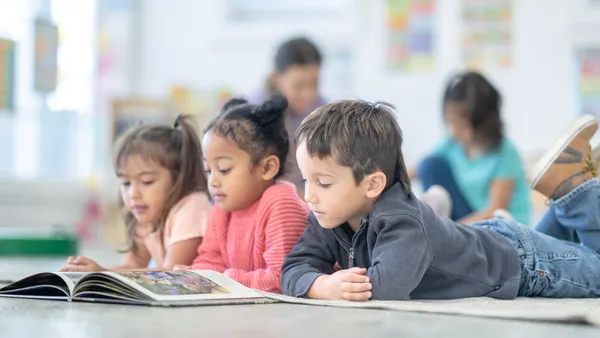Dive Brief:
- Schools where inquiry-based or student-centered learning is at work always exhibit four traits, Victoria, British Columbia, English teacher Trevor MacKenzie writes in KQED News. The first is that learners are actively involved in constructing understanding. No longer passive absorbers of information, they work with the teacher to come up with their learning conditions.
- The second is that teachers have taken on the roles of guides and mentors. They're observant and thoughtful, continuously tweaking their strategies to foster a culture of learning.
- The third is that the whole child is celebrated. Whether through social-emotional learning, personal awareness and responsibility, grit, or empathy, the language around learning in these spaces focuses on nurturing the whole student.
- Lastly, structure exists, but learning isn’t standardized. Although students are often exploring different topics of their choosing, they're all operating within a common unified structure.
Dive Insight:
Among education buzzwords of the moment are project-based learning, design thinking, and genius hour. These pedagogies have one primary thing in common — they're all student-centered variations on "inquiry-based learning."
So what can administrators, called upon to take on the mantle of instructional leaders, do to support their teachers in this era of student-centered learning? For starters, they can create a culture of learning and provide feedback to teachers. Administrators are also recognizing that classrooms are more active, and perhaps noisier, than they used to be.
School leaders can incorporate inquiry-based practices into professional development programs and staff meetings. Exploring values (perhaps by having teachers reflect on the parts of a unit that led to fear, joy or frustration, to illuminate what matters to them) and providing teachers flexibility with classroom social-emotional learning activities can go a long way. Allotting time during the school day for teachers to observe other classes and strategize with peers can result in content-centric lessons and projects that are woven into SEL.
Principals can also create protocols for teachers to use that will help their students reflect on how they feel about what they're learning. These might be as simple as a set of stickers with icons representing positive feelings, that can serve as strategically-placed reminders to implement a related behavior. Another example is collaborative conversations, during which students discuss steps surrounding a lesson and respond to each other's questions about the task at hand.











